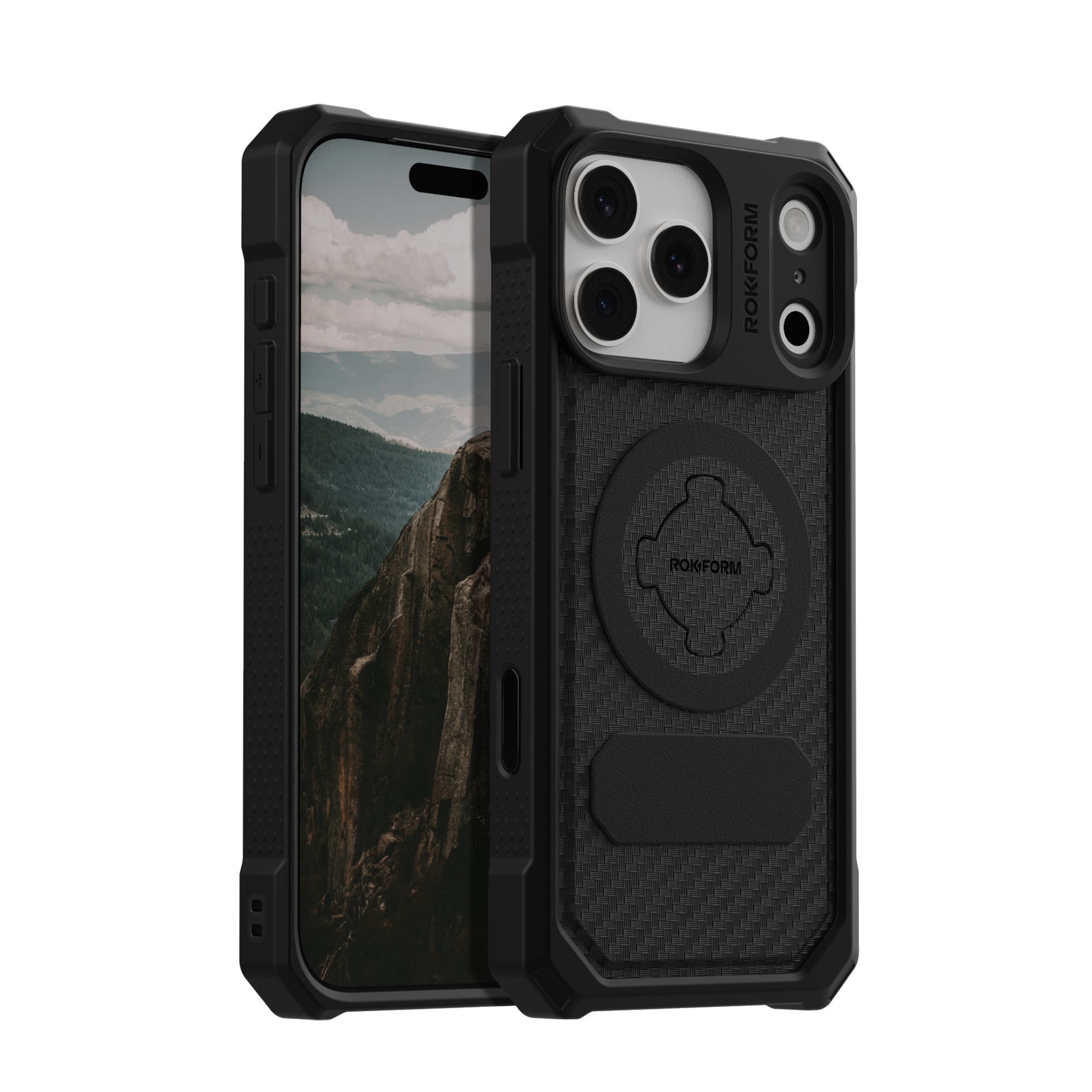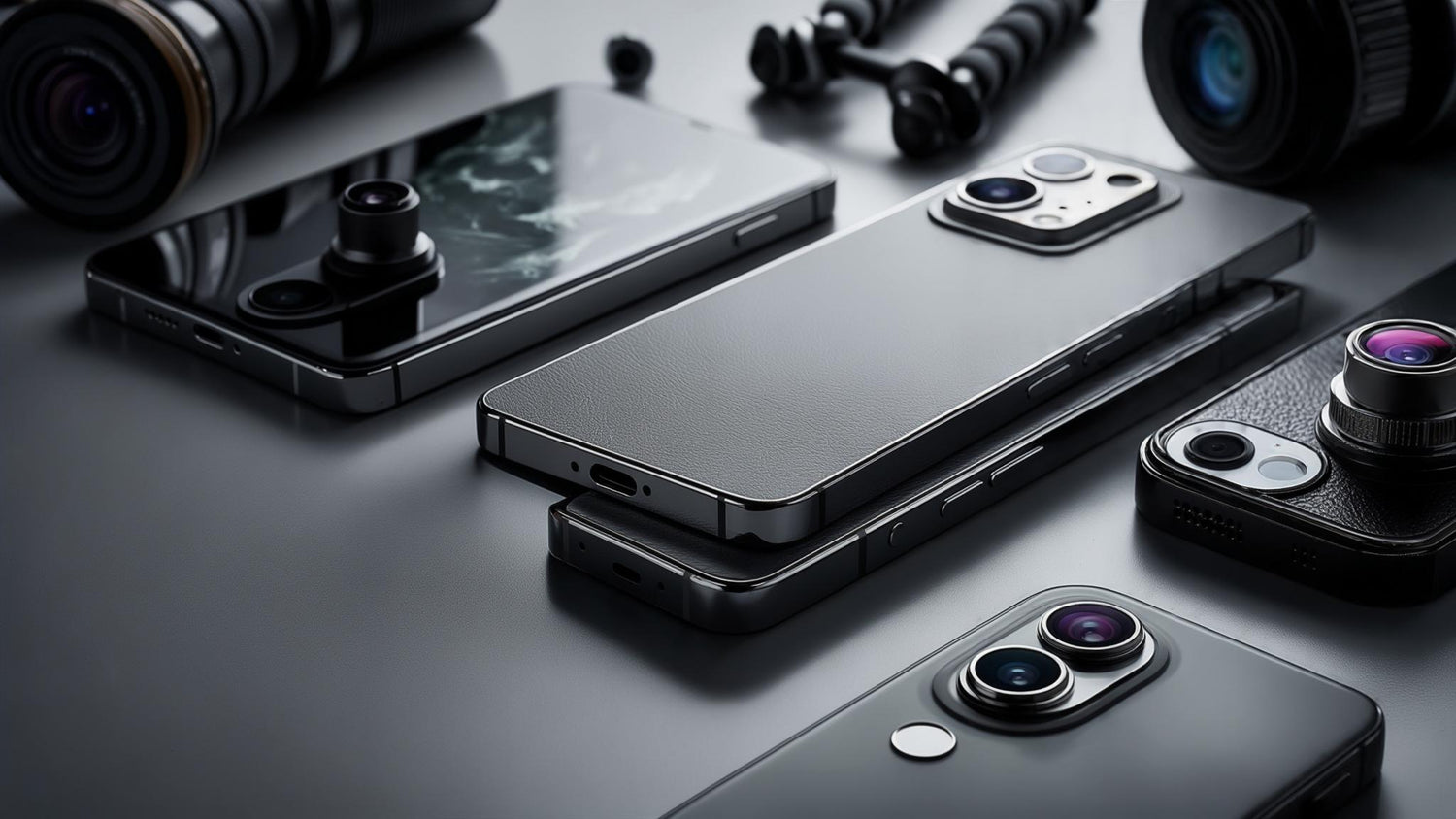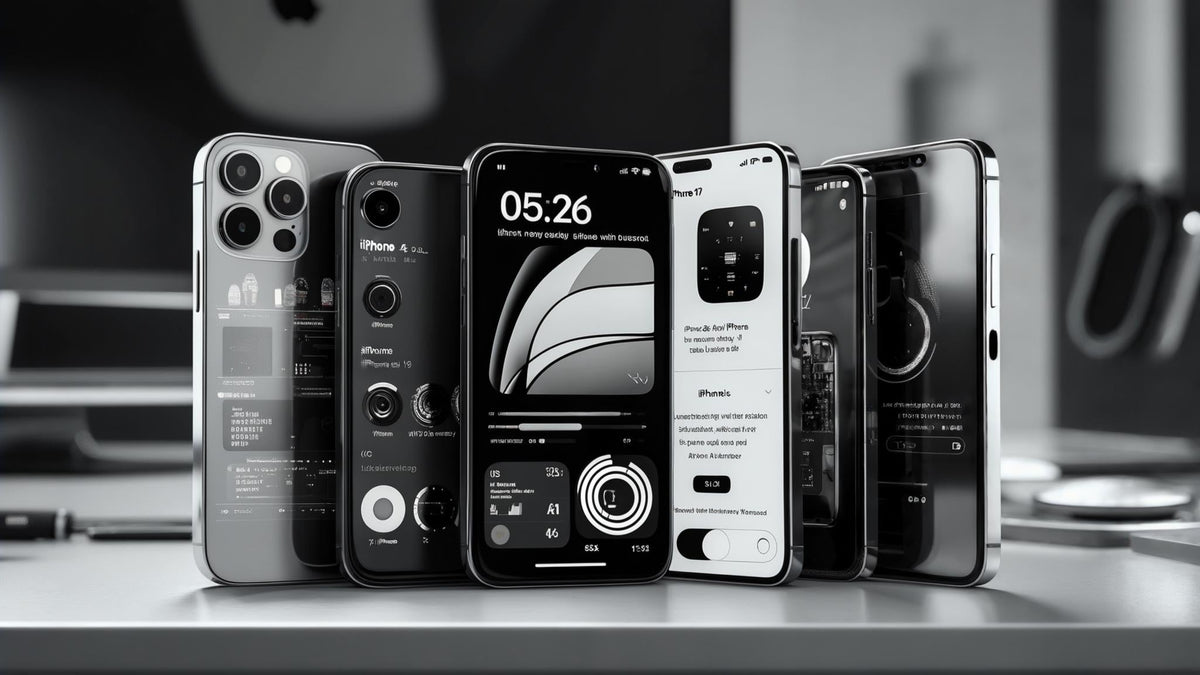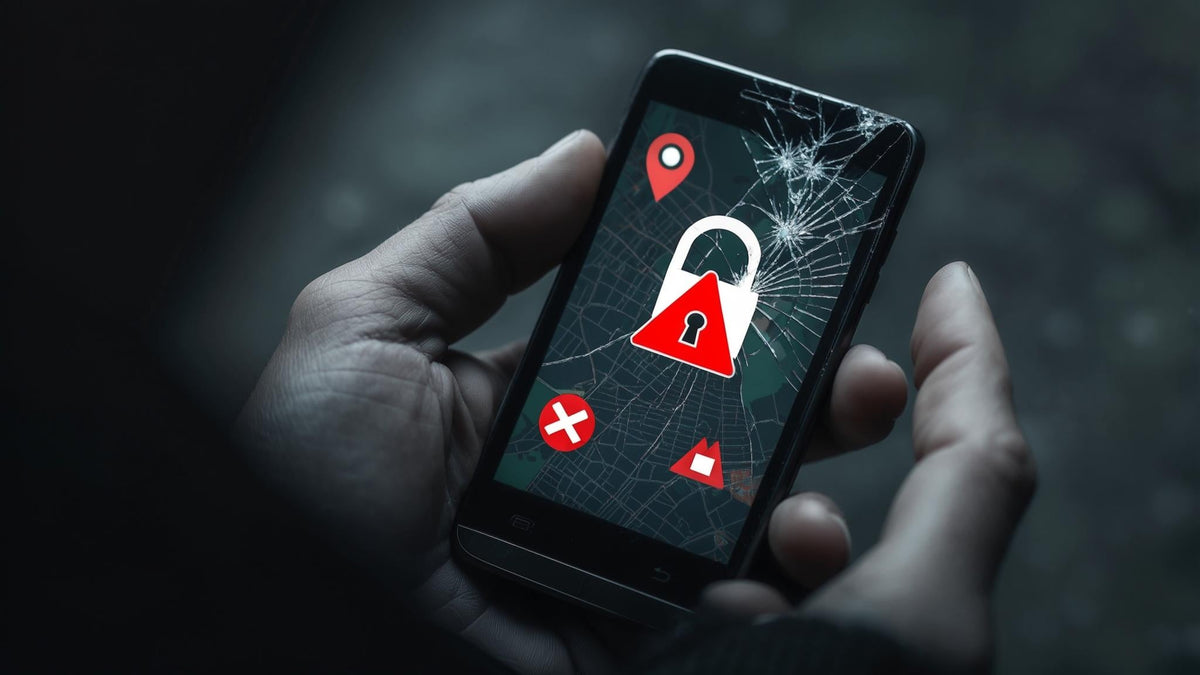Look, I used to be that person who carried a separate camera everywhere. Heavy DSLR bag, multiple lenses, the whole nine yards. Then I borrowed my friend's latest smartphone for a weekend trip, and honestly? I barely touched my "real" camera.
The phones on this list aren't just good for Instagram stories - they're legitimate camera replacements that happen to make calls. I've tested dozens of devices across every price range, from budget gems to flagship monsters, and these 25 represent the absolute cream of the crop.
Whether you're shooting content for work, capturing your kids' soccer games, or just want photos that don't look like they were taken through a potato, there's a perfect phone waiting for you. Some absolutely crush low-light situations, others make your videos look like Hollywood productions, and a few budget options will genuinely shock you with their flagship-level performance.
TL;DR
iPhone 15 Pro Max and Samsung Galaxy S24 Ultra are worth the money if you're serious about mobile photography
Google Pixels punch way above their weight with AI magic - often better than phones twice the price
Don't sleep on budget options like the Pixel 7a - sometimes software beats expensive hardware
Video creators should focus on stabilization and battery life over megapixels
Night photography has gotten insanely good - you can literally shoot in near darkness now
Protect your investment - a $1,200 phone needs a case that won't let you down
Premium Flagship Category: When Money's No Object
I'll be honest - when I first spent over $1,000 on a phone, I felt a little sick. But after using flagship camera phones for the past few years, I get it now. These aren't just phones with good cameras; they're legitimate camera replacements that happen to make calls.
These flagship devices aren't just incrementally better - they're in a completely different league. The sensors are massive (relatively speaking), the AI processing happens in real-time, and the video quality genuinely shocked me. I found myself leaving my DSLR in the hotel room during a recent trip to Yosemite.
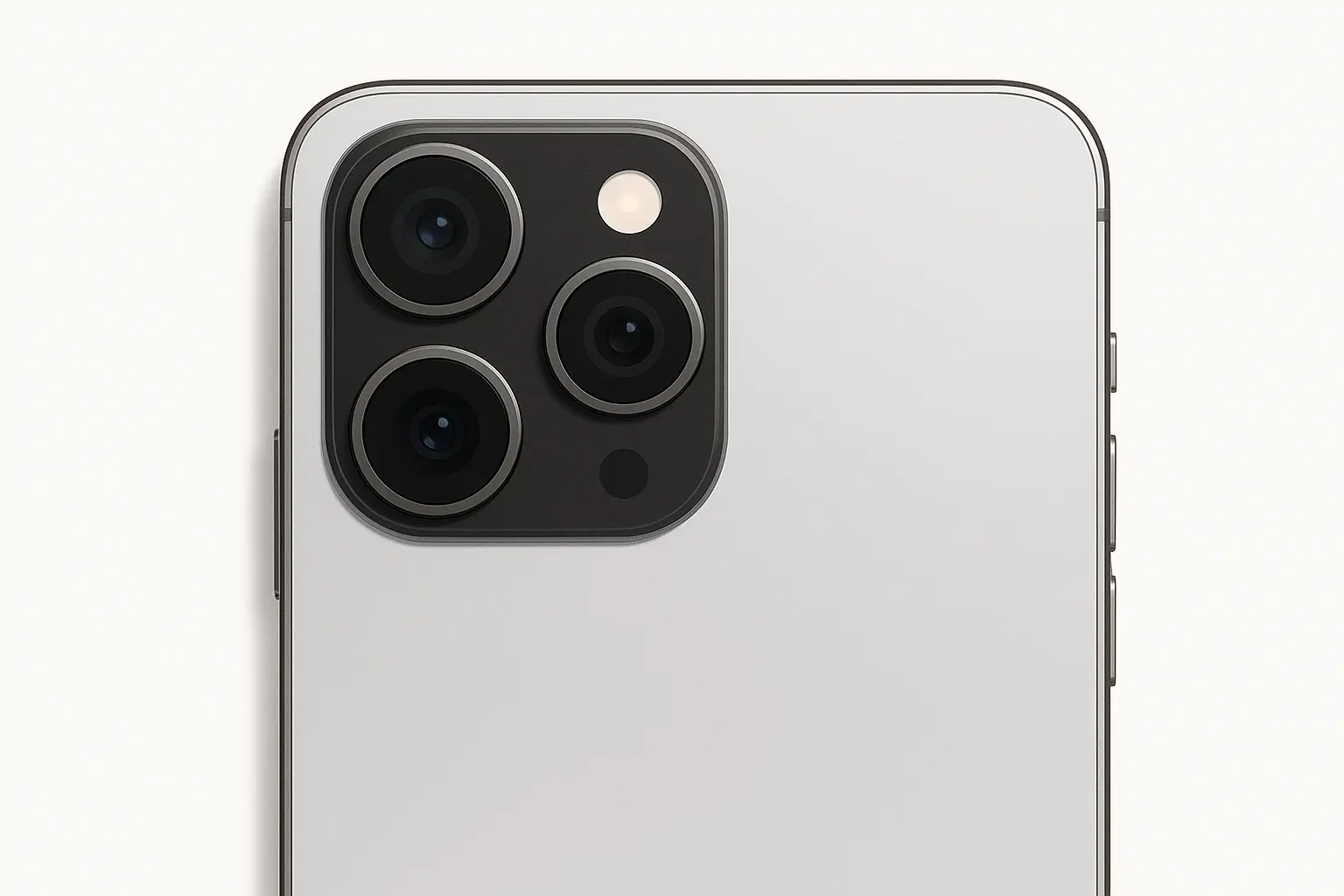
What Actually Makes These Phones Special
Forget the marketing speak - here's what you're really paying for. The sensors in these phones are 3-4 times larger than budget options, which means they literally capture more light. More light equals better photos, especially when you're not shooting in perfect conditions.
The processing power is where things get interesting. While you're taking a photo, these phones are actually capturing multiple images, analyzing the scene, and combining everything into one perfect shot. It happens so fast you don't even notice.
Feature |
Premium Flagship |
Mid-Range |
Budget |
|---|---|---|---|
Main Sensor Size |
1/1.28" - 1" |
1/1.56" - 1/1.4" |
1/2.55" - 1/1.7" |
Optical Image Stabilization |
Advanced (Sensor-shift/Gimbal) |
Basic OIS |
Digital only |
Processing Power |
Latest flagship chips |
Previous-gen flagship |
Mid-tier processors |
Video Recording |
8K/ProRes/LOG |
4K standard |
1080p/basic 4K |
Build Quality |
Premium materials/IP68 |
Mixed materials/IP54 |
Plastic/basic protection |
Price Range |
$1000-$1500+ |
$400-$800 |
$150-$400 |
Real talk: I tested the iPhone 15 Pro Max against my old Pixel 6 at my nephew's birthday party (indoor, terrible lighting, kids running everywhere). The difference wasn't subtle - it was night and day. The iPhone nailed focus, exposure, and color in situations where my older phone struggled.
These devices typically feature multiple high-quality lenses with consistent performance across the entire system. Professional features like RAW capture, manual controls, and advanced video recording capabilities make them essential tools for serious photographers and content creators.
Best Android Camera Phones: Freedom to Choose
Android phones are like that friend who always has the latest gadget before anyone else. Variable apertures, periscope zoom, under-display cameras - if it sounds futuristic, Android probably did it first.
The real advantage? Choice. Want the best AI photography? Pixel. Need crazy zoom capabilities? Samsung. Looking for value? Xiaomi's got you covered. Android's open ecosystem provides significant advantages for photographers who want DSLR-like functionality in a mobile device.
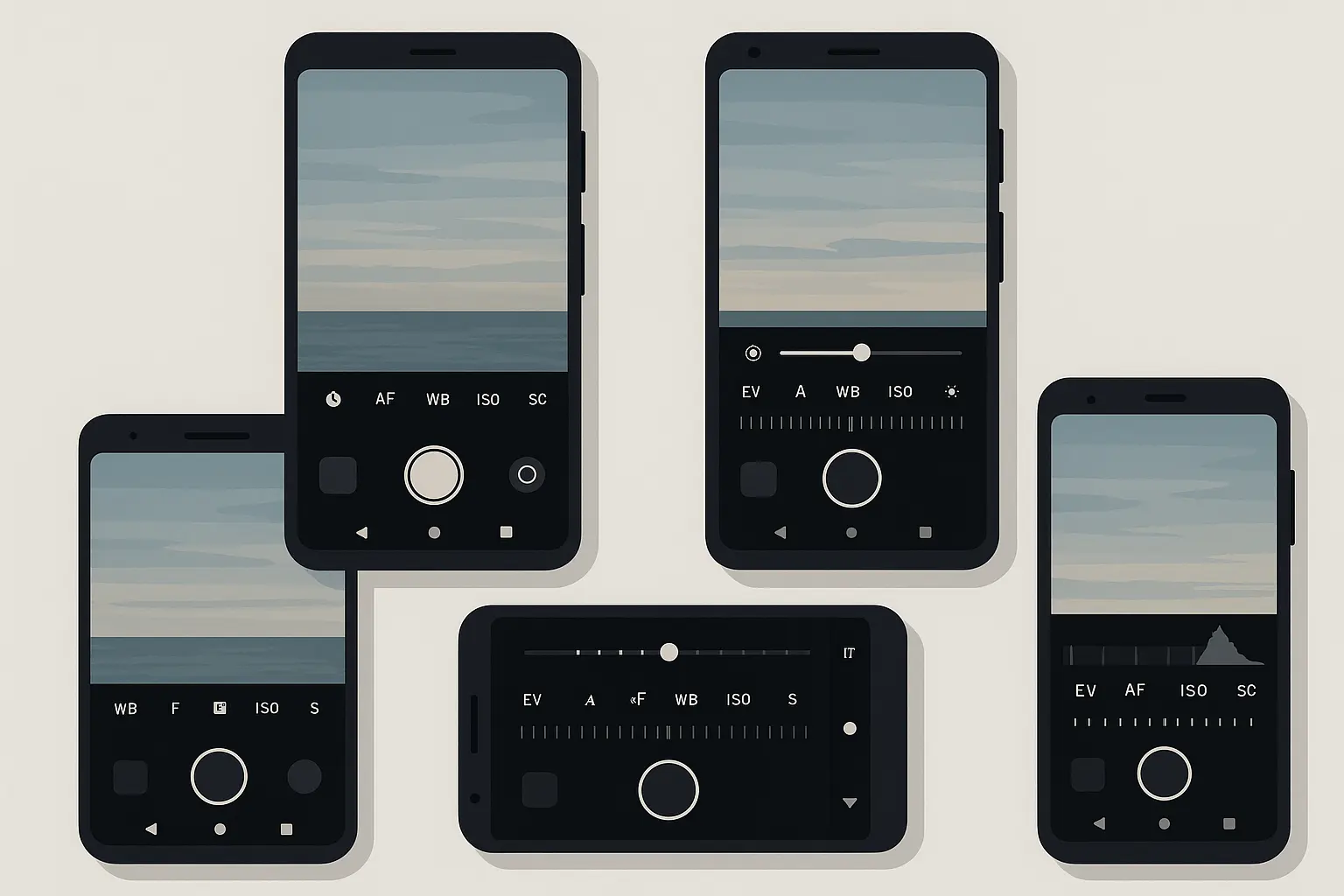
Google's AI Magic
Here's something wild: Google's Pixel 7a (which costs $499) often takes better photos than Samsung's $1,200 flagship. How? Software wizardry.
I was at a concert last month testing different phones. The Pixel automatically knew it was a low-light situation with moving subjects and adjusted everything accordingly. Meanwhile, I was still fumbling with manual settings on other phones. By the time I got them dialed in, the song was over.
The Pixel advantage: It's like having a professional photographer's assistant built into your camera, making split-second decisions you'd never think of. Features like Magic Eraser, Night Sight, and Real Tone demonstrate how software optimization can overcome hardware limitations.
Samsung brings versatility to the Android space with comprehensive camera systems spanning ultra-wide to extreme telephoto ranges. Their Galaxy S24 Ultra offers focal length coverage equivalent to carrying multiple dedicated lenses, making it incredibly appealing for photographers who want maximum flexibility.
Chinese manufacturers like Xiaomi, OnePlus, and Vivo often debut innovative features first. Variable apertures, periscope zoom systems, and ultra-fast charging typically appear on these brands before reaching Western flagships.
Budget Champions: Proving Expensive Isn't Always Better
This might be controversial, but some of the best photos I've taken this year came from a $400 phone. The Google Pixel 7a consistently embarrasses phones costing twice as much.
Budget phones succeed by being smart about where they spend money. Instead of premium materials and fancy features, they focus everything on the camera experience. Sometimes that means plastic backs and slower charging, but the photos? Chef's kiss.
The $400 Phone That Shoots Like a $1,000 Phone
I gave my mom a Pixel 7a last Christmas. She's not tech-savvy, doesn't care about specs, just wants good photos of her grandkids. Six months later, she's sending me photos that look like they came from a professional camera.
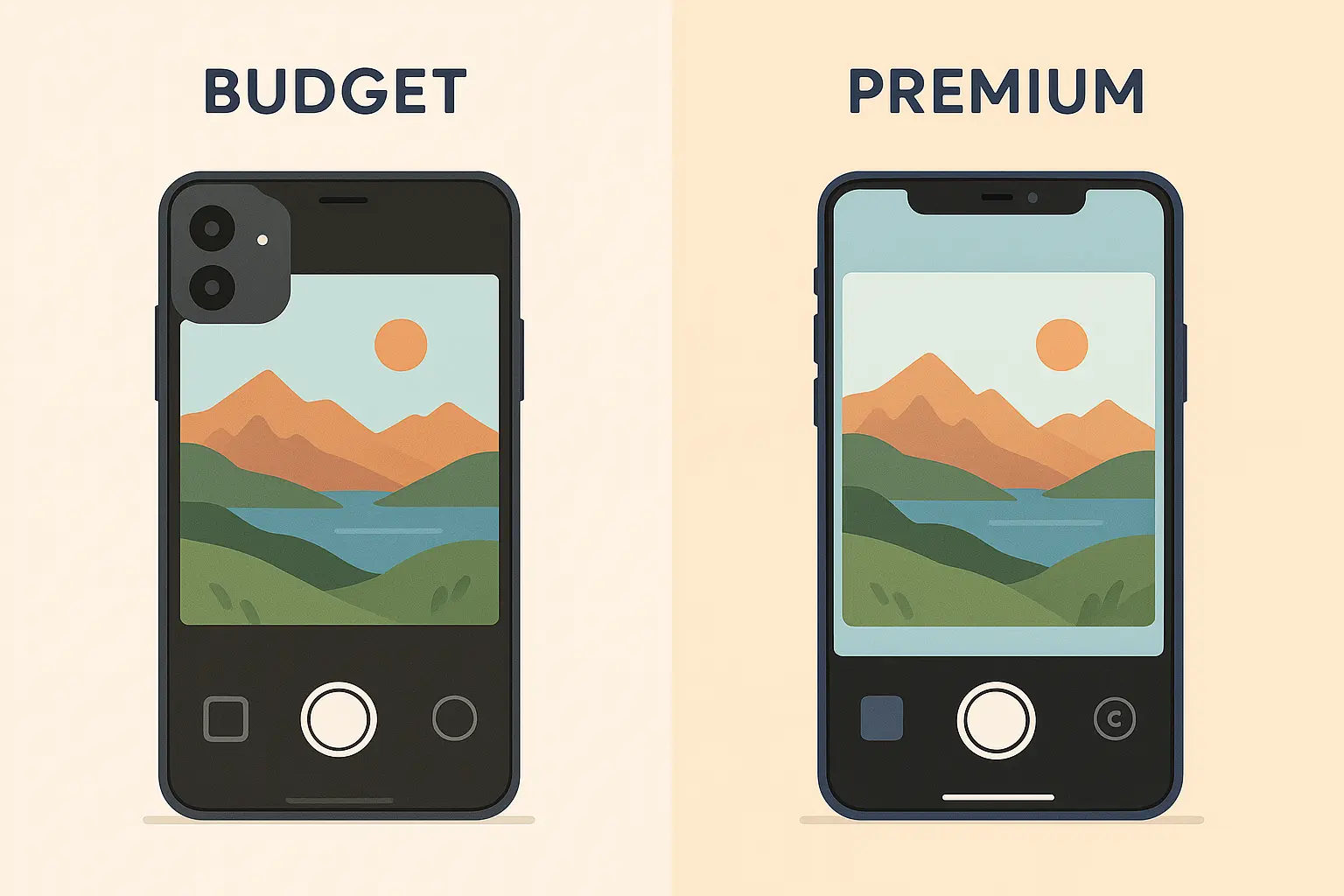
Why it works: Google took their flagship camera algorithms and put them in a cheaper phone. Same computational photography, same AI processing, just with a plastic back instead of aluminum. The Pixel 7a uses the same Tensor G2 chip and camera algorithms as flagship Pixels while making strategic compromises in build materials and secondary features.
The trade-offs are real - slower performance, less storage, cheaper materials. But if you mainly care about photos? These budget options are incredible values. A photographer comparing the Google Pixel 7a ($499) against the Samsung Galaxy S23 Ultra ($1,200) discovered that in daylight portrait photography, the Pixel 7a's computational photography algorithms produced more natural skin tones and better edge detection.
Storage and processing speed become more critical considerations in this category. Budget phones may struggle with burst photography or 4K video recording due to slower processors and limited RAM.
Video Recording Specialists: Hollywood in Your Pocket
Content creators, listen up. These phones can shoot footage that looks legitimately professional. I'm talking about stuff you could use in actual productions (and people do).
The iPhone 15 Pro can shoot in ProRes - the same format used by Hollywood studios. The stabilization is so good it's like having a gimbal built into your phone. I've shot entire YouTube videos handheld that look like I used a full camera rig.
Video recording demands different priorities than still photography. Stabilization technology, processing power, and thermal management become crucial factors. Battery life takes on even greater importance during extended recording sessions.
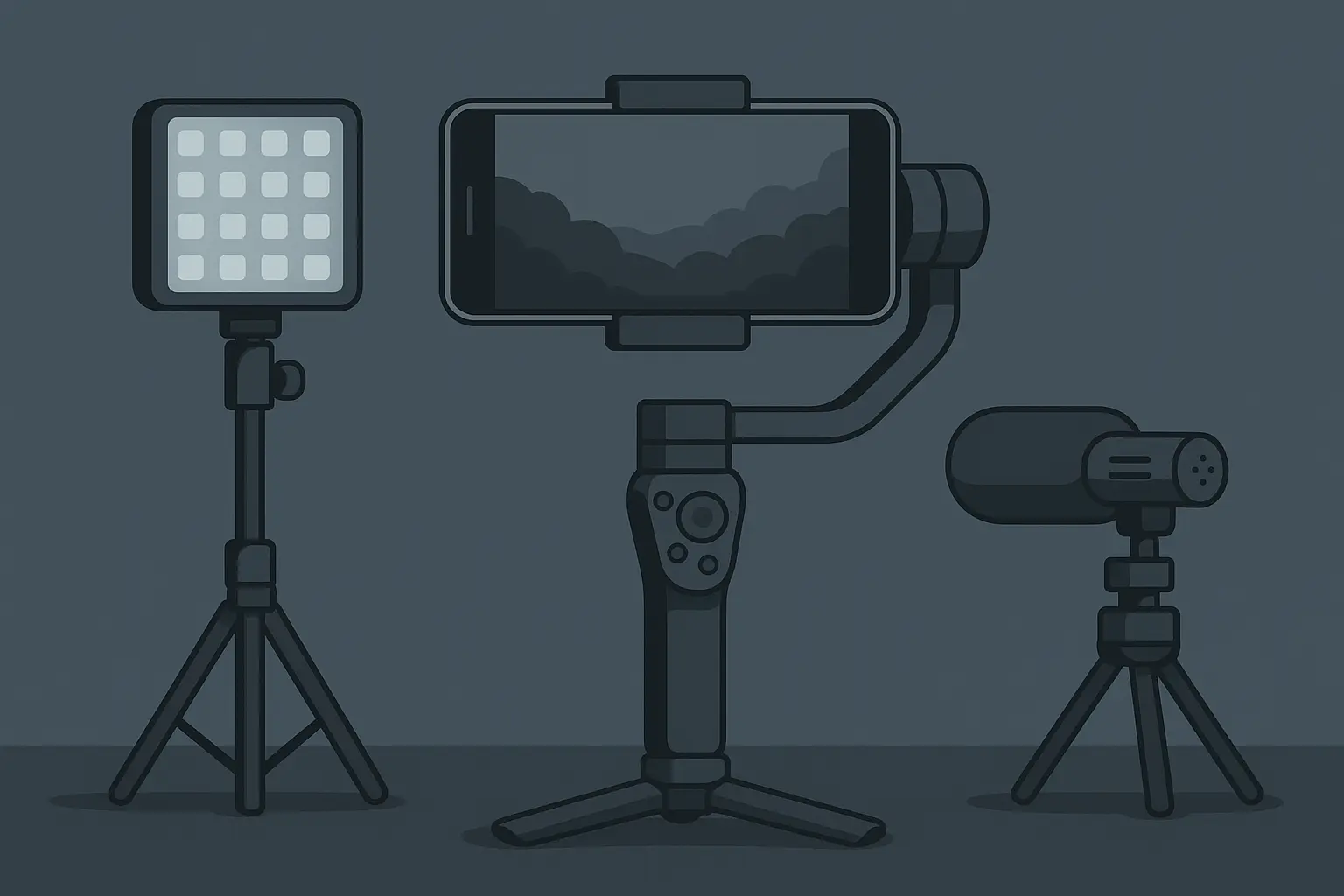
Features That Actually Matter for Video
Forget 8K recording - you probably don't need it. Here's what actually makes a difference:
Stabilization: This is everything. Shaky footage looks amateur, period. The iPhone's Action Mode and Samsung's Super Steady can make running footage look smooth as butter.
Battery life: Nothing kills a shoot faster than a dead phone. These video-focused phones are built to handle hours of recording without overheating or dying.
Storage: 4K video files are huge. We're talking 6GB for every minute of ProRes footage. Budget for the highest storage option you can afford.
Video Feature |
iPhone 15 Pro |
Galaxy S24 Ultra |
Sony Xperia 1 V |
Pixel 8 Pro |
|---|---|---|---|---|
Max Resolution |
4K ProRes |
8K/4K |
4K Cinema |
4K HDR |
Stabilization |
Action Mode + OIS |
Super Steady |
FlawlessEye |
Video Boost |
Professional Controls |
Manual focus/exposure |
Director's View |
Cinema Pro |
Magic Eraser Video |
Recording Formats |
ProRes, HDR10 |
H.265, HDR10+ |
S-Log3, HDR |
HDR10+ |
Audio Recording |
Spatial Audio |
360 Audio |
High-Res Audio |
Audio Magic Eraser |
Battery Life (4K) |
2.5 hours |
3 hours |
2 hours |
2.8 hours |
I learned this the hard way during a family vacation - ran out of storage halfway through recording my daughter's first surfing lesson. Heartbreaking.
Professional recording formats like ProRes and LOG profiles provide color grading flexibility that appeals to serious videographers. Manual controls for focus pulling, exposure adjustment, and audio monitoring transform phones into legitimate filmmaking tools.
Low-Light Photography: Seeing in the Dark
Night photography used to be impossible on phones. Now? I regularly capture photos in conditions where I can barely see with my naked eyes.
The technology is genuinely mind-blowing. These phones take multiple photos in rapid succession, analyze them for the sharpest details, and combine everything into a single image. What used to require a tripod and manual settings now happens automatically.
Low-light photography represents one of the most challenging aspects of mobile photography, where sensor size, computational processing, and AI algorithms combine to capture usable images in near-darkness.
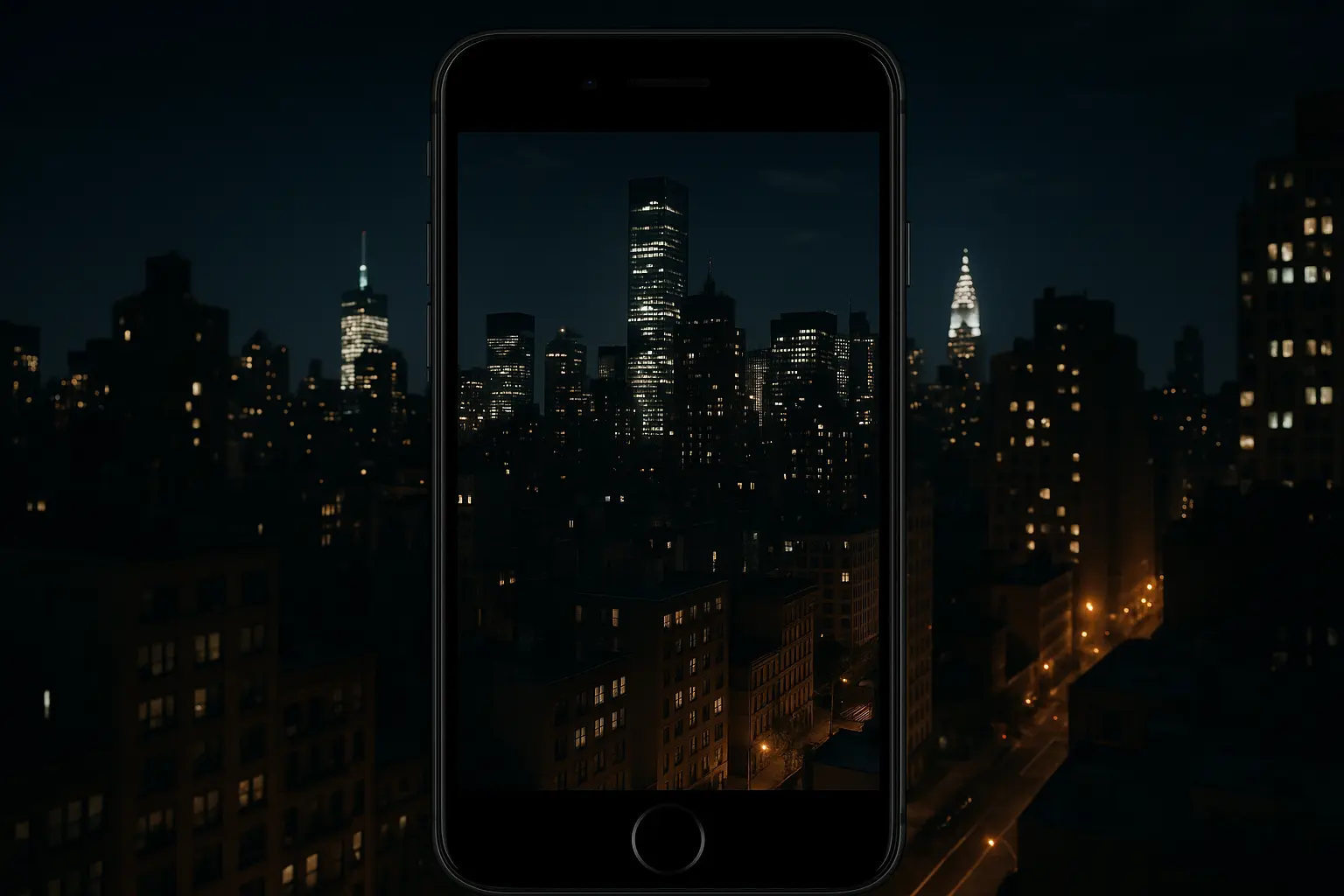
Real-World Night Photography
Last month, I was camping with friends in an area with zero light pollution. Using just my Pixel 8 Pro, I captured photos of the Milky Way that looked like they came from a dedicated astrophotography setup. Handheld. No tripod. Just point and shoot.
The iPhone 15 Pro Max's Night mode caught details of a campfire scene that showed both the bright flames and people's faces in the shadows - something that would have been impossible just a few years ago.
Larger sensors physically gather more light, providing the foundation for excellent low-light performance. The Xiaomi 14 Ultra's 1-inch sensor captures three times more light than typical smartphone sensors, resulting in cleaner images with less noise.
Pixel binning technology combines multiple photodiodes to create larger virtual pixels, improving light sensitivity without increasing physical sensor size. AI processing algorithms analyze multiple exposures, combining sharp details from short exposures with light gathering capability from longer ones.
The Complete Top 25 Breakdown
Rather than bore you with spec sheets, here's what you actually need to know about each phone:
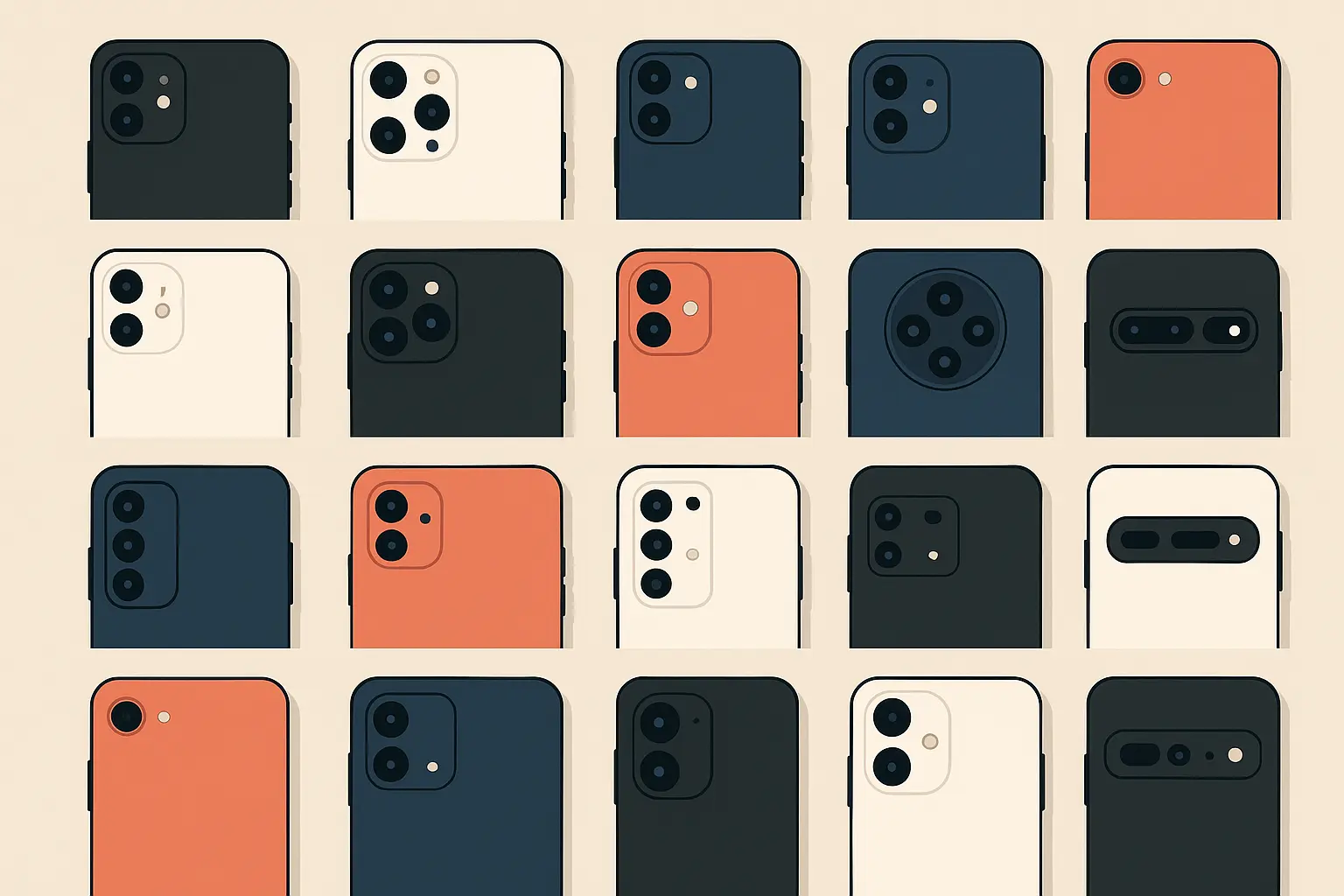
Premium Tier ($1000+)
1. iPhone 15 Pro Max
The video king. If you create content professionally, this is probably worth the money. The ProRes recording alone justifies the price for serious creators. Its 48MP main camera uses sensor-shift optical image stabilization for exceptional detail retention and low-light performance. The revolutionary 5x telephoto employs Apple's tetraprism design, delivering true optical zoom without the bulk of traditional periscope systems.
2. Samsung Galaxy S24 Ultra
Swiss Army knife of camera phones. Has literally every feature you could want, though the interface can be overwhelming. Samsung's flagship showcases a headline-grabbing 200MP main sensor with advanced pixel binning technology. The 10x periscope telephoto maintains exceptional image quality even at extreme zoom levels, while AI-enhanced processing optimizes every shot automatically.
3. Google Pixel 8 Pro
The AI photography champion. Takes the best photos with the least effort. Google's computational photography leadership shines through advanced AI features like Magic Eraser, Best Take, and Real Tone technology. The device excels particularly in night photography, with algorithms that can handheld capture images in conditions where dedicated cameras would require tripods.
4. Xiaomi 14 Ultra
Massive sensor, Leica partnership, half the price of comparable flagships. The catch? Software updates are inconsistent. The Leica partnership brings professional color science and a massive 1-inch main sensor. This sensor size advantage translates to significantly better low-light performance and overall image quality compared to smaller sensors.
5. Vivo X100 Pro
Zeiss optics collaboration and gimbal stabilization system set this phone apart in the premium category. The advanced portrait photography capabilities and professional video features make it particularly appealing to content creators. The device's stabilization system provides exceptionally smooth video recording.
Sweet Spot Tier ($500-800)
6. OnePlus 12
Clean Android, fast performance, solid cameras. Great all-rounder without the Samsung bloatware. Hasselblad color calibration brings professional color science to OnePlus's flagship offering. The device offers excellent value proposition in the flagship category.
7. Nothing Phone (2a)
Unique design, decent cameras, pure Android experience. Buy it if you want something different. The unique transparent design doesn't compromise camera performance, while the clean software experience appeals to users who prefer minimal interface customization.
8. Realme GT 5 Pro
Gaming-focused design doesn't prevent strong camera performance, with the periscope telephoto lens providing versatility for various shooting scenarios. Fast performance and value-oriented pricing make it competitive in the Android flagship space.
9. Honor Magic 6 Pro
AI-powered photography features and long-lasting battery life support extended shooting sessions. The premium build quality and advanced night mode capabilities make it a strong contender in the Android flagship category.
10. Oppo Find X7 Ultra
The Hasselblad partnership brings professional color science, while multiple telephoto lenses provide exceptional zoom versatility. Premium materials and professional camera app interface appeal to serious mobile photographers.
Budget Tier (Under $500)
11. Google Pixel 7a
The budget king. Flagship photo quality at half the price. My top recommendation for most people. Despite its lower price point, the Pixel 7a inherits Google's flagship computational photography algorithms. Features like Magic Eraser and Night Sight deliver results that often match or exceed more expensive competitors.
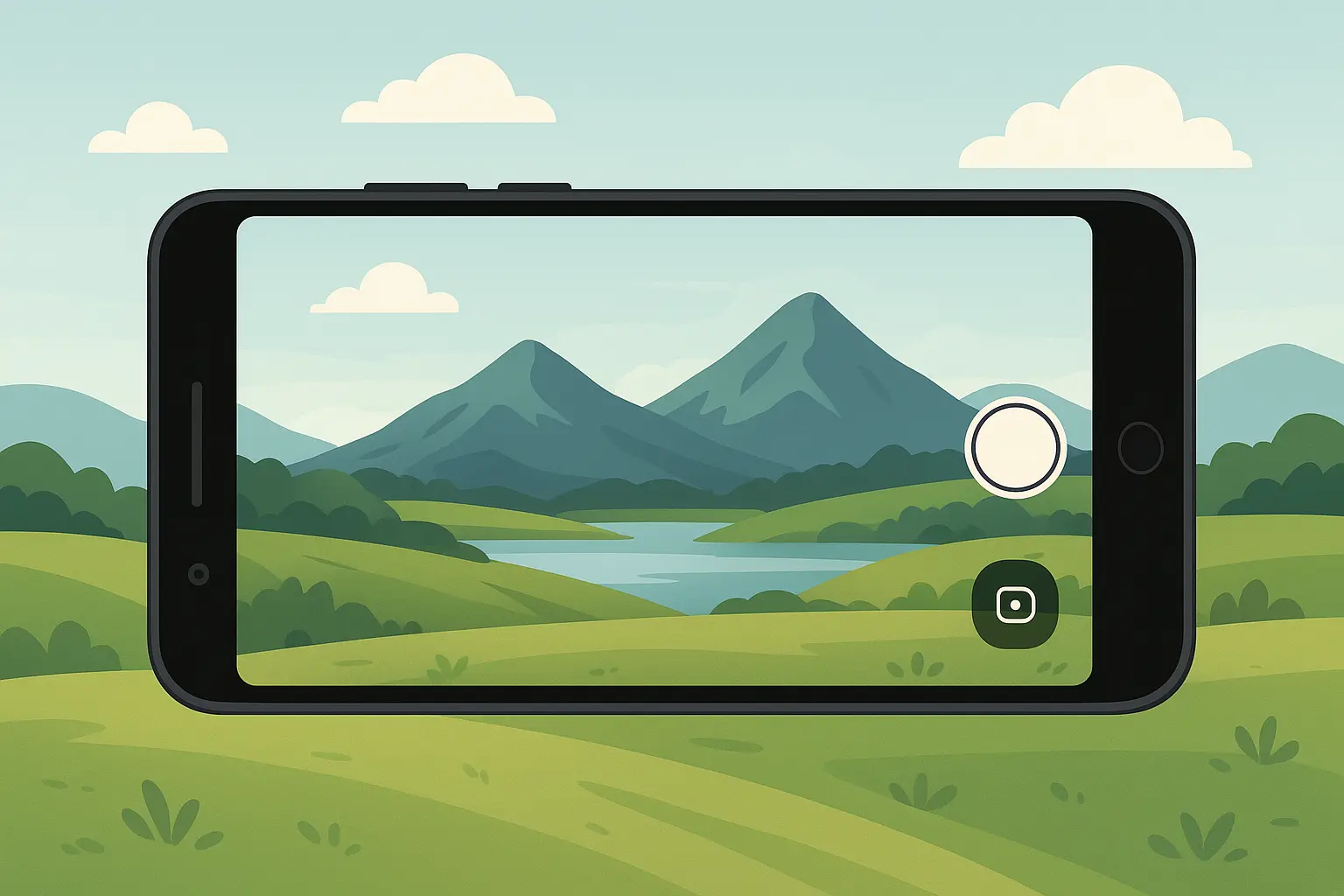
12. Samsung Galaxy A55
Reliable, regular updates, decent cameras. Safe choice if you want to stick with Samsung. Versatile camera system and good build quality provide solid performance at an affordable price. Regular software updates and Samsung's ecosystem integration add value beyond the initial purchase price.
13. Motorola Edge 50
Clean Android, good battery life, serviceable cameras. Nothing fancy, but gets the job done. Clean Android experience and decent camera performance make this a compelling budget option.
14. Xiaomi Redmi Note 13 Pro
High-resolution main camera and good low-light performance challenge the budget category assumptions. Fast charging and excellent value proposition make it particularly attractive for price-conscious buyers.
15. Nothing Phone (2a) - Mid-Range Variant
Unique design elements and solid camera system provide differentiation in the crowded mid-range market. Clean software experience and competitive pricing add to its appeal.
Video Recording Specialists
16. iPhone 15 Pro
ProRes video recording and Action Mode stabilization make this the premier choice for mobile videography. Professional video tools and consistent performance across all recording modes appeal to content creators.
17. Sony Xperia 1 V
Cinema Pro app and professional video controls bring DSLR-like functionality to mobile video recording. The 21:9 aspect ratio matches cinematic standards, while S-Log recording enables professional color grading workflows.
18. Samsung Galaxy S24+
8K video recording and Director's View provide advanced video capabilities. Super Steady mode and professional video features make it competitive with dedicated video cameras in many scenarios.
19. Asus ROG Phone 8
Gaming-focused features translate well to content creation, with advanced cooling preventing thermal throttling during intensive video recording. The 6000mAh battery supports extended recording sessions.
20. Red Magic 9 Pro
Gaming optimization and high-performance specifications support demanding video recording tasks. Advanced cooling system and content creation features make it appealing to mobile videographers.
Low-Light Photography Masters
21. Huawei P60 Pro
Variable aperture technology and RYYB sensor design provide exceptional low-light capabilities. The Ultra Lighting Telephoto system captures usable images in near-complete darkness, though Google services limitations affect overall usability.
22. Oppo Reno 11 Pro
Portrait photography focus and good low-light performance make this device particularly appealing for social media content creation. Stylish design and competitive features add to its market appeal.
23. Vivo V30 Pro
Portrait-focused cameras and ring light simulation provide studio-quality lighting effects. Good selfie performance and stylish design appeal to users who prioritize front-facing camera quality.
Brand Category Leaders
24. Apple iPhone Series
Consistent quality across the entire lineup and regular software updates provide long-term value. Ecosystem integration and professional video capabilities make iPhones particularly appealing to users invested in Apple's ecosystem.
25. Samsung Galaxy Series
Wide range of options from budget to premium ensures something for every user. Advanced features, regular updates, and versatile camera systems make Samsung a safe choice across all price points.
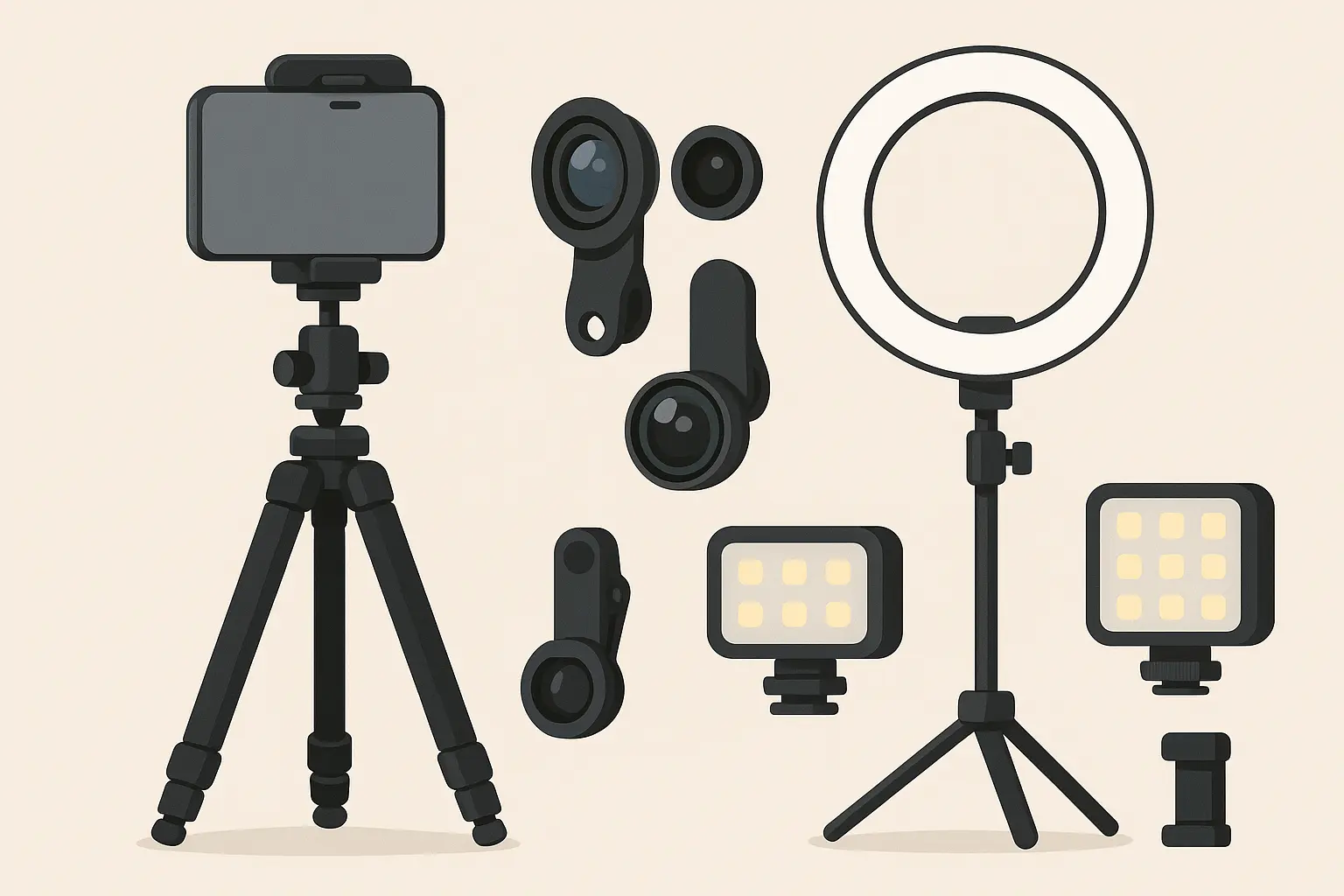
What Actually Matters When Choosing
Forget the spec sheets for a minute. Here's what really matters in daily use:
Choosing the right camera phone requires balancing technical specifications with real-world usage patterns, budget constraints, and ecosystem preferences. Understanding these key factors helps narrow down options and find the device that best matches your specific photography needs.
Technical Specs That Don't Lie
Megapixel count often misleads consumers about actual image quality. Sensor size, aperture width, and optical image stabilization have much greater impact on real-world performance than raw megapixel numbers.
Computational photography capabilities increasingly determine image quality differences between devices. AI-powered features like night mode, portrait processing, and HDR algorithms can dramatically improve results regardless of hardware specifications.
Specification |
Why It Matters |
What to Look For |
Common Misconceptions |
|---|---|---|---|
Sensor Size |
Light gathering ability |
1/1.3" or larger for flagships |
Bigger sensors = better photos |
Aperture |
Low-light performance |
f/1.4-f/1.8 for main camera |
Lower f-number always better |
Megapixels |
Detail resolution |
12-50MP sweet spot |
More MP = better quality |
OIS |
Shake reduction |
Sensor-shift preferred |
Digital stabilization equivalent |
Processing |
AI enhancements |
Latest flagship chips |
Hardware specs alone determine quality |
Storage |
File capacity |
256GB+ for serious use |
Cloud storage eliminates need |
Battery life: A dead phone takes terrible photos. Premium phones generally last all day even with heavy camera use.
Storage: Start with 256GB minimum if you shoot a lot of video. Trust me on this one.
Updates: iPhones get 5+ years of updates. Google promises 7 years for newer Pixels. Samsung varies but is getting better.
Ecosystem: If you're deep in Apple's ecosystem, switching to Android (even for a better camera) might not be worth the hassle.
Real-World Performance Factors
Processing speed affects your ability to capture fleeting moments. Fast image processing ensures you don't miss shots, while ample storage prevents constant photo management interruptions.
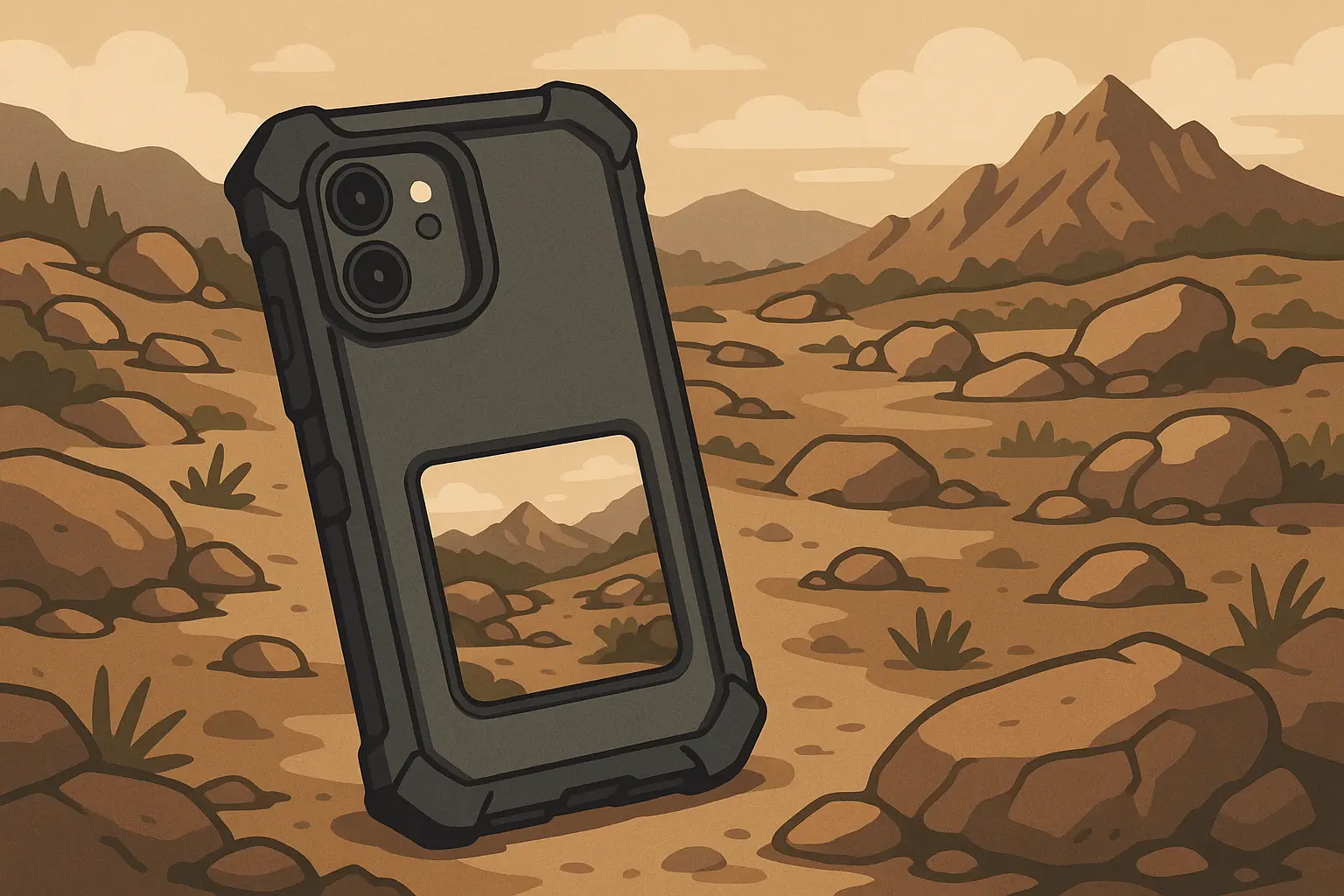
Durability and weather resistance matter significantly if you plan to use your phone's camera in challenging environments. IP68 ratings and premium materials protect your investment during active outdoor photography.
Storage considerations become more important as image and video file sizes increase. RAW files can consume 75MB each, while 4K ProRes video requires 6GB per minute of recording.
Protecting Your Investment
Here's something nobody talks about: the best camera phone is useless if it's broken. I've seen too many people baby their expensive phones, missing great shots because they're worried about damage.
While selecting the right camera phone is crucial, protecting that investment ensures long-term performance and reliability. Your expensive camera phone deserves protection that matches its capabilities.
Good protection lets you use your phone confidently. Whether that's a rugged case for outdoor adventures or a reliable mounting system for your car, proper accessories are part of the equation. Rokform's military-grade protection and mounting solutions provide the security and versatility that serious mobile photographers need.
Security and Stability for Mobile Photography
The patented RokLock™ system and MAGMAX™ magnets enable secure mounting in various positions for creative photography. Whether you need motorcycle mounts for scenic road trip photography, car mounts for time-lapse videos, or stable surfaces for group photos, professional-level stability becomes essential.
Unlike cheap cases that interfere with camera performance, quality protection maintains full functionality while providing maximum security. Precise cutouts ensure flash performance isn't compromised, while the design doesn't interfere with wireless charging or advanced camera features.
Bottom line: Buy the protection when you buy the phone. Future you will thank present you when you inevitably drop it.
My Honest Recommendations
For most people: Google Pixel 7a. Flagship photo quality, reasonable price, guaranteed updates.
For content creators: iPhone 15 Pro Max. The video features alone justify the premium.
For Android enthusiasts: Samsung Galaxy S24 Ultra if money's no object, OnePlus 12 for better value.
For budget shoppers: Pixel 7a again, or Samsung Galaxy A55 if you prefer Samsung's ecosystem.
Final Thoughts
The camera phone landscape has never been better. Even budget options today outperform flagships from just a few years ago. Whatever you choose, you're probably going to be happy with it.
Premium flagships like the iPhone 15 Pro Max and Samsung Galaxy S24 Ultra justify their premium pricing through superior sensors, advanced computational photography, and professional features that serious photographers will appreciate. However, the gap between flagship and budget performance continues to narrow thanks to AI-powered processing improvements.
Budget champions like the Google Pixel 7a prove that exceptional mobile photography doesn't require flagship spending. Smart software optimization and targeted hardware choices create compelling alternatives that often outperform more expensive competitors in specific scenarios.
Your choice ultimately depends on balancing technical requirements with practical considerations like ecosystem preference, budget constraints, and intended usage patterns. Whether you prioritize video recording capabilities, low-light performance, or overall versatility, the current market offers excellent options across every category.
Remember that protecting your camera phone investment with quality cases and mounting solutions ensures you can confidently use these advanced camera systems in challenging environments where great photos often happen. The best camera phone is the one you have with you - and the one that's properly protected when you need it most.
Ready to protect your camera phone investment? Explore Rokform's complete protection and mounting solutions to ensure your photography gear performs reliably in any environment.

